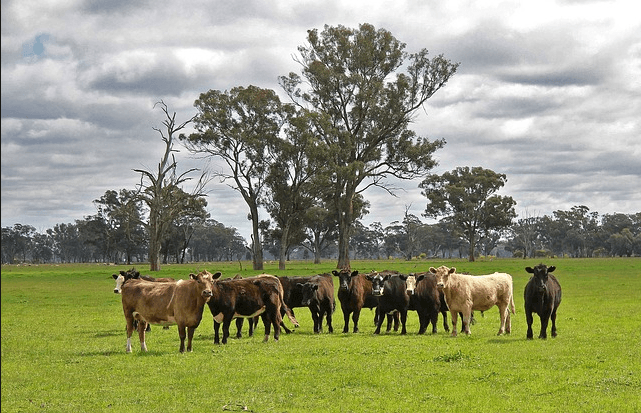Livestock industry causes harmful effects on environment
4 min read
Pixabay
By NATALIE FURMAN
Earlier this semester I wrote an article about the impact of the meat industry on the environment but found myself in a tizzy a just a few days after it was published. I cited sources which I now believe have been skewed. The United Nations Food and Agricultural Organization, which covers the harmful impacts of the livestock industry, the environment and global warming effects did not provide sufficient sources. I now believe that the FAO has fallen short of accounting for all of the greenhouse gas emissions attributable to livestock and production.
The FAO published a report in 2006 estimating that 18 percent of human-induced worldwide GHG emissions are attributable to livestock. Analysis by Robert Goodland and Jeff Anhang reviewed the FAO’s accounting, and ended up explaining how GHG emissions attributable to livestock actually accounts for at least 51 percent of human-induced GHG emissions.
Goodland retired as lead environmentalist adviser at The World Bank Group after serving there for 23 years. In 2008 he was awarded the first Coolidge Memorial Medal by the IUCN, International Union for Conservation of Nature, for outstanding contributions to environmental conservation.
Anhang is a research officer and environmental specialist at The World Bank Group’s International Finance Corporation. They notably explained how the FAO underestimated or overlooked some categories of GHGs, and assigned others to the wrong sector.
The FAO’s 2006 analysis claimed that 7,516 million tons of CO2e per year is attributable to livestock. Goodland and Anhang found in 2009 that 25,048 million tons of CO2e attributable to livestock were missing from the FAO’s 2006 analysis. Then in 2012, the FAO partnered with global livestock industry association to undertake further analysis and in 2013, they reduced their estimate of GHGs attributable to livestock from eighteen percent to 14.5 percent.
In a analysis by Goodland and Anhang focuses especially on carbon in livestock respiration, carbon absorption forgone on land used for livestock and feed production, and the lifecycle of methane.
The argument for counting carbon in livestock respiration is that a perfect equilibrium once existed between the amounts of CO2 respired by animals and that photosynthesized by plants, but it no longer exists.
The amount of carbon respired by animals has increased sharply as the number of livestock raised has risen, and at the same time much more forest has been cleared, therefore decreasing the amount of carbon absorbed through photosynthesis. This has coincided with a huge increase in carbon released by humans, industries and transportation.
There is a worldwide shortage of grassland but an ever-increasing demand for livestock production. To keep up with this demand the only option is to destroy natural forest. Livestock markets have been increasing mostly in developing countries.
Rain forests, which normally store 200 tons of carbon per hectare, which is a metric unit of square measure equal to 100 acres, must be destroyed to expand livestock-raising and they are replaced by grassland, where the carbon stored per hectare drops to eight.
The FAO does not count these large amounts of GHG reductions from photosynthesis that are forgone by using 26 percent of land worldwide for grazing livestock and 33 percent for growing feed.
Livestock accounted for 37 percent of human-induced methane, according to the FAO in 2006. Experts have affirmed the point made by Goodland and Anhang that accounting for methane should reflect that it dissipates in the atmosphere much more quickly than carbon dioxide.
In addition, research done at Harvard University has affirmed the point made by Goodland and Anhang that official accounting for methane appears to undercount actual methane emissions significantly.
Livestock production contributes to a perilous amount of emissions and there is only one effective strategy to slowing climate change in the near term – and that is replacing livestock products with better alternatives. The Kyoto Protocol made it a priority to reduce the usage of fossil fuels – but GHG emissions have increased by more than 60 percent since the Kyoto Protocol was signed.
The Kyoto Protocol is an international treaty, which extends the 1992 United Nations Framework Convention on Climate Change that commits State Parties to reduce greenhouse gases emissions, based on the premise that (a) global warming exists and (b) man-made CO2 emissions have caused it.
If you want to join the cause and end climate change, check out chompingclimatechange.org and do not forget to click the NO BULL tab if you would like to get involved in the No Bull Project, a campaign that aims at spreading awareness about the impact of the livestock industry on the environment and encouraging people to adopt alternative forms of “meat.”











